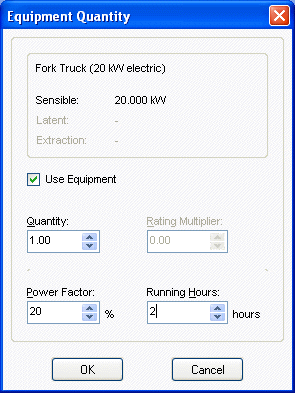It is not possible to either create or destroy energy and therefore all sources of energy such as from electrical machinery located in a space to be cooled should theoretically consider that all of the electrical energy needed to drive it must be converted to heat within that space. However, sources of energy such as electric motor driven machinery that is introduced into space to be cooled normally have a Power Factor applied. This is expressed as a percentage to be applied to the Plate Rated duty of the item in order to de-rate the electrical Plated Rating to realistically expected heat energy under typical operating conditions. In other words where an item of machinery might be rated at say 5 kW and this signifies the maximum power the item is capable of delivering, it is unusual and also unlikely that all of this energy is converted to heat energy within the space to be cooled that it is occupying. A 5 kW conveyor motor might have a power factor of 90% applied and only then if it is operating continuously under close to maximum load conditions. A fork lift truck might be rated at 20 kW or more but only when it is travelling at the same time as lifting to its maximum capacity is all of this energy likely to be radiated, conducted and convected into the space surrounding it. The fork truck is also likely to be operating for part of the time completely outside the space to be cooled. In such circumstances and according to manufacturers of this type of equipment a Power Factor of from 15% to 25% would be appropriate.

See Also:-
other loads